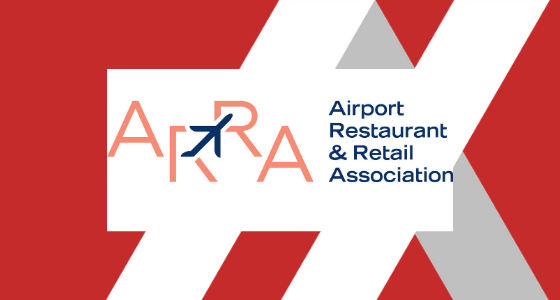Creating a sustainable concessions program in spite of external events was a key focus on this week’s industry call hosted by the Airport Restaurant & Retail Association (ARRA). Chris Czarnecki, director of Portland International Airport (PDX) business development and properties for Port of Portland, and Jim DeCock, interim director of revenue generation and partnership development for the San Diego County Regional Airport Authority, offered their insights on the way forward for concessions programs.
Czarnecki says restoring confidence in the travel experience is key, and that includes restoring operator confidence that they can have a fair shot at generating profits at the airport.
“It’s confidence … that they feel that they can make their investment in the future of the airport – that they know the balance of risk and reward is the right balance,” he says. “Because certainly there’s going to be more thought and trepidation about entering into a [concessions program] and making the large investments.”
Czarnecki pointed out that PDX has a direct leasing approach to concessions. “We have many partners that blend a lot of different types of business,” he says. “In order for us to be successful and keep doing that, we need the confidence of our community and our local operators. They need to know that if they’re going to go into an airport, yes, there is risk, but there is a support structure that’s in place to help them succeed.
“And, and even more important, look at the costs of building out an airport,” Czarencki continued. “It’s something we’re focused on every day. It’s gotten to the point where [there are] astronomical increases in construction costs for our tenants and for our base building contracts. We’re looking really closely at all the things we can do to break down those barriers for entry into our program.”
DeCock said it’s extremely difficult to assess how programs need to evolve given the current flux. Passenger habits are changing, with more demand for safety, and currently leisure travelers far outnumber business travelers. But he said no matter what, it’s crucial that SAN involves the local community in any forward concessions planning, and that comes with challenges.
“We need to bring the small business operator in and involve that local community,” he says. “It’s going to be probably very difficult to do that right now because there is probably going to be a fear. So we have to develop some programs starting to give them some confidence that if they do take on this big challenge to come into an airport environment, that there’s some … confidence that we’re going to be by their side to help them and help get them through the tough times.”
The two airport executives discussed the labor challenges currently faced by concessionaires, with most businesses struggling to attract workers to the airport.
“One thing I think the industry needs to grapple with is how we can improve the lives of those folks who are on the front lines doing this work,” Czarnecki said. “We’ve tried some things at Portland and we’ve had some success, but there’s more to do. It’s not just wages and benefits; it’s the whole experience.”
Czarnecki pointed to certain perks already in place at PDX, including reduced cost of mass transit. “We want to hear from our concession partners,” he added. “What can we do for you to help you attract and retain and develop – not just bring them in and have them work shifts, although that’s a need too – but how do we develop people so that they become the managers, directors and vice presidents of the future?”
DeCock suggested recognition is important, along with wages. “The [San Diego} Airport Authority recognizes employees on the concession side that are going above and beyond,” he says. “That’s not the employee being recognized by their employer, but being recognized by the airport and outside entity.” With fewer employees, those who are working hard “to take care of our passengers and to really create that customer experience that we’re trying to model across the airport” deserve to be recognized.
Some sort of standardization in customer service protocol could be beneficial, DeCock said, noting that effort would likely be led by an airport.
A Forward Look At Contracting
The minimum annual guarantee (MAG) has emerged as a flashpoint in the pandemic recovery efforts. Most U.S. airports deferred or waived the MAGs called for in their contracts with concessionaires during the depth of the downturn, but now that recovery is starting, the use of MAGs in contracting is coming under scrutiny.
At PDX, there is a “longstanding tradition of not relying on MAG,” and the airport doesn’t score bids based on MAGs, according to Czarnecki. The airport does have MAGs in its contracts with concessionaires, but they are adjustable with decreases in enplanements.
Czarnecki says the PDX contracts are “set up pretty well for this kind of stress test.” He added: “In my mind … MAG should not really be a factor in a healthy business environment. It is there to provide predictability and a safety net for the airport and the financial structures,” he said. “It’s there also to motivate each business operator to drive business and operate as efficiently as possible.”
SAN is currently reviewing its approach to MAGs, DeCock said. “What is the optimum way to charge rent or to use MAGs?,” he asked. “Many airports need it from a financial perspective and from a security perspective. But how is it generated? Is that from square footage, from sales, from projections?” SAN will be assessing those issues before issuing new RFPs in the coming years.
Czarnecki said it’s time to make the business arrangements more equitable. “That’s the one real huge opportunity because we’re going to recover – this industry’s been tested over and over and over again, and it’s resilient,” he said. “If we don’t do a little better job of creating a more equitable this system, I we’ve missed an opportunity.”






